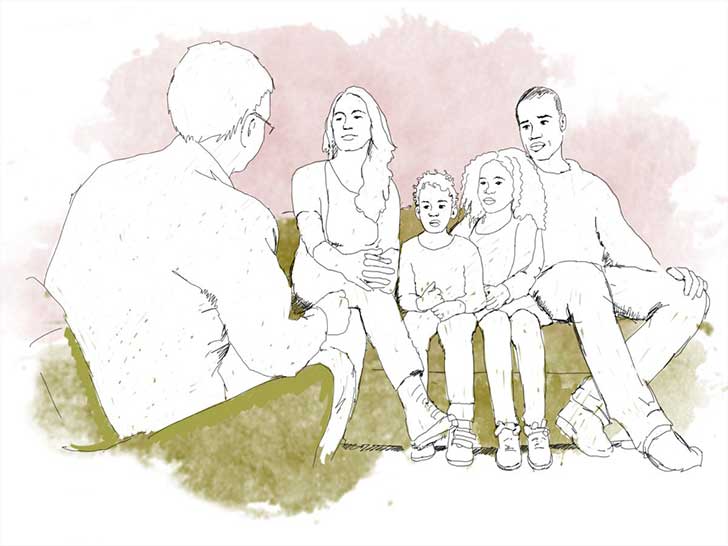اخبار روانشناسی ندای مهر
|
||||||||||||||||||||||||||||||||||||||||||||||||||||||||||||||||||||||||||||||||||||||||||||||||||||||||||||||||||||||||||||||||||||||||||||||||||||||||||||||||||||||||||||||||||||||||||||||||||||||||||||||||||||||
Impact of an Event
|
Not at all
|
Rarely
|
Sometimes
|
Often
|
|||
|
1.
|
I thought about it when I didn't mean to.
|
0
|
1
|
3
|
5
|
|
|
2.
|
I avoided letting myself get upset when I though about it or was reminded about it.
|
0
|
1
|
3
|
5
|
|
|
3.
|
I tried to remove it from memory.
|
0
|
1
|
3
|
5
|
|
|
4.
|
I had trouble falling asleep or staying asleep because of pictures or thoughts about it that came to my mind.
|
0
|
1
|
3
|
5
|
|
|
5.
|
I had waves of strong feelings about it.
|
0
|
1
|
3
|
5
|
|
|
6.
|
I had dreams about it.
|
0
|
1
|
3
|
5
|
|
|
7.
|
I stayed away from reminders about it.
|
0
|
1
|
3
|
5
|
|
|
8.
|
I felt as if it hadn't happened or was un real.
|
0
|
1
|
3
|
5
|
|
|
9.
|
I tried not to talk about it.
|
0
|
1
|
3
|
5
|
|
|
10.
|
Pictures about it popped into my mind.
|
0
|
1
|
3
|
5
|
|
|
11.
|
Other things kept making me think about it.
|
0
|
1
|
3
|
5
|
|
|
12.
|
I was aware that I still had a lot of feelings about it‚ but I didn't deal with them.
|
0
|
1
|
3
|
5
|
|
|
13.
|
I tried not to think about it.
|
0
|
1
|
3
|
5
|
|
|
14.
|
Any reminder brought back feelings about it.
|
0
|
1
|
3
|
5
|
|
|
15.
|
My feelings about it were kind of numb.
|
0
|
1
|
3
|
5
|
|
|
__0__
|
+ ____
|
+ _________
|
+ ___
|
= ___
|
|
27
or more
|
There is a 75% chance that you have Post Traumatic Stress Disorder
(PTSD).4 Those who do not have full PTSD may have partial PTSD or at least some of the symptoms. |
|
35
and above
|
This represents the best cutoff for a probable diagnosis of PTSD.5 Consider consulting a mental health professional who is skilled in treating such issues.
|
|
1. Unpleasant thought come into my mind against my will and I cannot get ride of them
|
1
|
2
|
3
|
4
|
|
2. I think contact with bodily secretion ( sweat‚ saliva‚ blood‚ urine‚ etc.) may contaminate my clothes or somehow harm me
|
1
|
2
|
3
|
4
|
|
3. I ask people to repeat things to me several times‚ even thought I understood them the first time
|
1
|
2
|
3
|
4
|
|
4. I wash and clean obsessively
|
1
|
2
|
3
|
4
|
|
5. I have to review mentally past events‚ conversation and actions to make sure that I didn't do something wrong
|
1
|
2
|
3
|
4
|
|
6. I have saved up so many things that they get in the way
|
1
|
2
|
3
|
4
|
|
7. I check things more often than necessary
|
1
|
2
|
3
|
4
|
|
8. I avoid using public toilets because I am afraid of disease or contamination
|
1
|
2
|
3
|
4
|
|
9. I repeatedly check doors‚ windows‚ drawers etc.
|
||||
|
10. I repeatedly check gas / water taps / light switches after turning them of
|
||||
|
11. I collect things I don't need
|
||||
|
12. I have thoughts of having hurt someone without knowing it
|
||||
|
13. I have thoughts that I might want to harm myself or others
|
||||
|
14. I get upset if objects are not arranged properly
|
||||
|
15. H feel obliged to follow a particular order in dressing‚ undressing and washing my self
|
||||
|
16. I feel compelled to count while I'm doing things
|
||||
|
17. I am afraid to impulsively doing embarrassing or harmful things
|
||||
|
18. I need to pray to cancel bad thoughts or feelings
|
||||
|
19. H keep on checking forms or other things I have written
|
||||
|
20. I get upset at the sight of knives‚ scissors or other sharp objects in case I loos control with them
|
||||
|
21. I am obsessively concerned about cleanliness
|
||||
|
22. I find it difficult to touch an object when I know it has been touched by strangers or certain people
|
||||
|
23. I need things to be arranged in a particular order
|
||||
|
24. I get behind in my work because I repeat things over and over again
|
||||
|
25. I feel I have to repeat certain numbers
|
||||
|
26. After doing something carefully‚ I still have the impression I haven't finished it
|
||||
|
27. I find it difficult to touch rubbish dirty things
|
||||
|
28. I find it difficult to control my thoughts
|
||||
|
29. I have to do things over and over again until it feels right
|
||||
|
30. I am upset by unpleasant thought that come into my mind against my will
|
||||
|
31. Before going to sleep I have to do certain things in a certain way
|
||||
|
32. I go back to places to make sure that I have harmed anyone
|
||||
|
33. H frequently get nasty thought and have difficulty getting rid of them
|
||||
|
34. I avoid throwing away because I am afraid I might need them later
|
||||
|
35. I get upset if others have changed the way I have arranged my things
|
||||
|
36. H feel that I must repeat certain words or phrases in my mind order to wipe out bad thoughts‚ feelings or actions
|
||||
|
37. After I gave done things‚ I have persistent doubts about whether I really did them
|
||||
|
38. I sometimes have to wash or clean myself simply because I feel contaminated
|
||||
|
39. I feel that there are good and bad numbers
|
||||
|
40. I repeatedly check anything that might cause a fire
|
||||
|
41. Even when I do something very carefully I feel that it is not quite right
|
||||
|
42. I wash my hands more often‚ or longer than necessary
|
|
||||
|
|
||
|
IMPACT OF EVENT SCALE - REVISED
INSTRUCTIONS: Below is a list of difficulties people sometimes have after stressful life events.
Please read each item‚ and then indicate how distressing each difficulty has been for you DURING THE
PAST SEVEN DAYS with respect to ____________________________‚ how much were you distressed or bothered by these difficulties?
Not at All = 0
A little Bit = 1
Moderately = 2
Quite a Bit = 3
Extremely= 4
1. Any reminder brought back feelings about it. 0 1 2 3 4
2. I had trouble staying asleep. 0 1 2 3 4
3. Other things kept making me think about it. 0 1 2 3 4
4. I felt irritable and angry. 0 1 2 3 4
5. I avoided letting myself get upset when I thought about it or was reminded of it. 0 1 2 3 4
6. I thought about it when I didn't mean to. 0 1 2 3 4
7. I felt as if it hadn't happened or wasn't real. 0 1 2 3 4
8. I stayed away from reminders about it. 0 1 2 3 4
9. Pictures about it popped into my mind. 0 1 2 3 4
10. I was jumpy and easily startled. 0 1 2 3 4
11. I tried not to think about it. 0 1 2 3 4
12. I was aware that I still had a lot of feelings about it‚ but I didn't deal with them. 0 1 2 3 4
13. My feelings about it were kind of numb. 0 1 2 3 4
14. I found myself acting or feeling like I was back at that time. 0 1 2 3 4
15. I had trouble falling asleep. 0 1 2 3 4
16. I had waves of strong feelings about it. 0 1 2 3 4
17. I tried to remove it from my memory. 0 1 2 3 4
18. I had trouble concentrating. 0 1 2 3 4
19. Reminders of it caused me to have physical reactions‚ such as sweating‚ trouble breathing‚ nausea‚ or a pounding heart. 0 1 2 3 4
20. I had dreams about it. 0 1 2 3 4
21. I felt watchful and on guard. 0 1 2 3 4
22. I tried not to talk about it. 0 1 2 3 4
SCORING:
Avoidance Subscale: Mean of items 5‚ 7 ‚8 ‚11 ‚12 ‚13 ‚17 ‚22
Intrusions Subscale: Mean of items 1‚ 2‚ 3‚ 6‚ 9‚ 16‚ 20
Hyperarousal Subscale: Mean of items 4‚ 10‚ 14‚ 15‚ 18‚ 19‚ 21
Impact of Events - Revised score: Sum of the above three clinical scales.
Note that the Hyperarousal scale is made up of 7 new items (No's 4‚10‚14‚15‚18‚19‚21) added to the original Impact of Events Scale (IES). For valid comparisons with scores from the IES‚ use just the sum of the Avoidance and Intrusion items.
In J.P. Wilson & T.M. Keane (Eds.)‚ Assessing psychological trauma and PTSD: A Practitioner's Handbook. New
York: Guilford © 1995: Daniel S. Weiss & charles R. Marmar
|
STAXIApplication of the Spielberger’s State-Trait Anger Expression Inventory in clinical patients
|
I am furious
|
1.
|
|
I feel irritated
|
2.
|
|
I feel angry
|
3.
|
|
I feel like yelling at somebody
|
4.
|
|
I feel like breaking thing
|
5.
|
|
I am mad
|
6.
|
|
I feel like banging on the table
|
7.
|
|
I feel like hitting someone
|
8.
|
|
I am burned up
|
9.
|
|
I feel like swearing
|
10.
|
|
I am quick tempered
|
11.
|
|
I have a fiery temper
|
12.
|
|
I am a hothead person
|
13.
|
|
I get angry when slowed down
|
14.
|
|
Annoyed when no recognition
|
15.
|
|
I fly off the handle
|
16.
|
|
When I get mad‚ I say nasty things
|
17.
|
|
Furious when criticized in front
|
18.
|
|
Frustrated‚ feel hitting someone
|
19.
|
|
Infuriated when poor evaluation
|
20.
|
|
I control my behavior
|
21.
|
|
I express my anger
|
22.
|
|
I keep things in
|
23.
|
|
I am patient with others
|
24.
|
|
I become sullen
|
25.
|
|
I withdraw from people
|
26.
|
|
I make sarcastic remarks to others
|
27.
|
|
I keep frit
|
28.
|
|
I do thing like slam doors
|
29.
|
|
Nothing force me to show anger
|
30.
|
|
I control my temper
|
31.
|
|
I argue with others
|
32.
|
|
I tend to harbor grudges
|
33.
|
|
I pout or sulk
|
34.
|
|
I can stop from losing my temper
|
35.
|
|
I do things like slam doors
|
36.
|
|
Angrier than I am willing to admit
|
37.
|
|
I am irritated a great deal more
|
38.
|
|
I say nasty things
|
39.
|
|
I have to be tolerant and comprehensive
|
40.
|
|
I argue with others
|
41.
|
|
I lose my temper
|
42.
|
|
If annoyed‚ apt to tell how I feel
|
43.
|
|
I control my angry feelings
|
44.
|
|
|
|||||||||||||||||
|
Hamilton Anxiety Rating Scale (HAM-A)
Read the symptom in the left column. Rate it on a scale of 0-4 in the right column.
0 - Not at all
1 - Mild 2 - Moderate 3 - Severe 4 - Very Severe
Rating Clinician-rated
Administration time 10–15 minutes
Main purpose To assess the severity of symptoms
of anxiety
Population Adults‚ adolescents and children
Reference: Hamilton M.The assessment of anxiety states by rating. Br. J. Med. Psychol 1959;32:50–55.
|
|
|
||
|
Edinburgh Depression Scale
(or Edinburgh Postnatal Depression Scale)
DATE COMPLETED_____________
As you have recently had a baby‚ we would like to know how you are feeling. Please CIRCLE the number next to the answer which comes closest to how you have felt IN
THE PAST 7 DAYS‚ not just how you feel today. Here is an example‚ already completed.
I have felt happy:
In the past 7 days:
1. I have been able to laugh and see the funny side of things.
2. I have looked forward with enjoyment to things.
3. I have blamed myself unnecessarily when things went wrong.
4. I have been anxious or worried for no good reason.
In the past 7 days:
5. I have felt scared or panicky for no very good reason.
6. Things have been getting on top of me.
7. I have been so unhappy that I have had difficulty sleeping.
8. I have felt sad or miserable.
9. I have been so unhappy that I have been crying.
10. The thought of harming myself has occurred to me.
Scoring and Other Information
Response categories are scored 0‚ 1‚ 2‚ and 3 according to increased severity of the symptom. Items 3‚ 5-10 are reverse scored (i.e.‚ 3‚ 2‚ 1‚ and 0). The total score is calculated by adding together the scores for each of the ten items. Users may reproduce the scale without further permission providing they respect copyright (which remains with the British Journal of Psychiatry) quoting the names of the authors‚ the title and the source of the paper in all reproduced copies.
The Edinburgh Postnatal Depression Scale (EPDS) has been developed to assist primary care health professionals to detect mothers suffering from postnatal depression; a distressing disorder more prolonged than the "blues" (which occur in the first week after delivery) but less severe than puerperal psychosis.
Previous studies have shown that postnatal depression affects at least 10% of women and that many depressed mothers remain untreated. These mothers may cope with their baby and with household tasks‚ but their enjoyment of life is seriously affected and it is possible that there are long term effects on the family.
The EPDS was developed at health centres in Livingston and Edinburgh. It consists of ten short statements. The mother underlines which of the four possible responses is closest to how she has been feeling during the past week. Most mothers complete the scale without difficulty in less than 5 minutes.
The validation study showed that mothers who scored above a threshold 12/13 were likely to be suffering from a depressive illness of varying severity. Nevertheless the EPDS score should not override clinical judgement. A careful clinical assessment should be carried out to confirm the diagnosis. The scale indicates how the mother has felt during the previous week‚ and in doubtful cases it may be usefully repeated after 2 weeks. The scale will not detect mothers with anxiety neuroses‚ phobias or personality disorders.
Instructions for users
1. The mother is asked to underline the response which comes closest to how she has been feeling in the previous 7 days.
2. All ten items must be completed.
3. Care should be taken to avoid the possibility of the mother discussing her answers with others.
4. The mother should complete the scale herself‚ unless she has limited English or has difficulty with reading.
5. The EPDS may be used at 6-8 weeks to screen postnatal women. The child health clinic‚ postnatal check-up or a home visit may provide suitable opportunities for its completion.
Cox‚ J. L.‚ Holden‚ J. M.‚ & Sagovsky‚ R. (1987). Detection of postnatal depression: Development of the 10-item Edinburgh Postnatal Depression Scale. British Journal of Psychiatry‚ 150‚ 782-786. -3-
|

-

مزایا و فایده مشاوره خانواده برای من چیست؟
کارشناس ندای مهر (مشاوره خانواده) -

-

-

رک گویی و بی پرده حرف زدن در خانواده خوب است یا بد؟
کارشناس ندای مهر (مشاوره خانواده) -

چرا به مشاوره خانواده مراجعه کنیم و به وی پول بدهیم؟
کارشناس ندای مهر (مشاوره خانواده)





